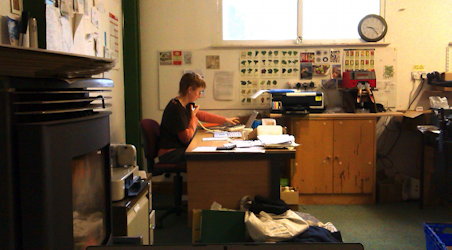~ SWEET LUPINS ~
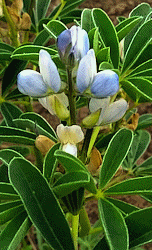
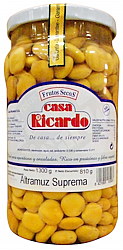
Lupins are a high-protein crop that grows well in the UK; the beautiful flowers are followed by large pods full of nutritious seed like a flattened bean.
In South America lupins are a traditional food (travellers among you will have come across them as 'Altramuz' or 'Chochos'), but those old varieties were bitter, like olives, and had to be laboriously and repeatedly soaked and rinsed to make them edible. This is why we have not offered them before, even though they are easy to grow.
But now we have found a new sweet lupin - the variety "Dieta" was recently bred in the UK specially for human use and is completely bitter-free, even without any special preparation. It's a whole new vegetable to try, that is easy and tasty!
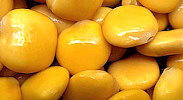
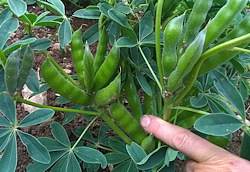 'Dieta' Sweet Lupin
'Dieta' Sweet Lupin
This grows to 2ft - 3ft tall and make spikes of beautiful flowers, followed by large pods full of edible high-protein seeds.
NOTE: People who are allergic to peanuts might also react to eating lupin seed (there are similar compounds in them) - don't feed lupins to anyone with a peanut allergy.
A special lupin variety bred for eating.
![]() 40 seeds
£
40 seeds
£
COOKING: With young tender lupin seeds (in the green pod stage) you can just shell them out and boil them for 15 minutes or until soft. If cooking with dried lupin seeds then you will need to soak them overnight, then boil in fresh water for 40 minutes or until tender (it depends how dry they were!) Note that these are special lupins, you cannot eat seeds from normal decorative lupin plants.
GROWING: Plant your Lupin seeds in spring (April onwards) in a small pot and transplant them out once about 4 or 5 inches tall. Maybe plant two seeds per pot as germination is often a bit erratic.
'Dieta' Sweet Lupin - pre-innoculated with helpful bacteria NEW
This year we are offering for you to try exactly the same seed but pre-coated with helpful symbiotic Rhizobium bacteria, which help the plants to fix nitrogen from the soil.
Lupins, like peas and beans, form a cooporative relationship with bacteria living in the soil: the plants provide sugar and oxygen and little nodules for the bacteria to live in, and the bacteria fix nitrogen from the air and feed it to the plant. Both benefit - the plants get to grow well in soils that are very poor in nutrients, and the bacteria get a food supply and a safe place to live.
Many soils already have these bacteria living in it - especially if you've already grown peas or beans in this spot, and these will colonise your baby plants once they germinate. But some soils simply don't have the bacteria present and so it is quite common to use seed that has been pre-coated with the helpful bacteria just to make sure that it all grows well.
Once you've grown a crop in that spot the bacteria will be present and you probably don't need to buy inoculated seed again.
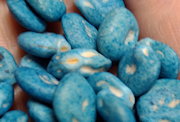 NOTE: These seeds are an alarming blue colour! They have to be dyed to show that they have had something added to them. However it really is not a toxic chemical, it is just a food-grade dye, mixed with a small number of these helpful bacteria which are perfectly safe to humans!
NOTE: These seeds are an alarming blue colour! They have to be dyed to show that they have had something added to them. However it really is not a toxic chemical, it is just a food-grade dye, mixed with a small number of these helpful bacteria which are perfectly safe to humans!
![]() 40 seeds, (an alarming blue colour but just food dye + helpful bacteria
)£
40 seeds, (an alarming blue colour but just food dye + helpful bacteria
)£
NOTE: If you are thinking of buying both and planting them together to see what difference it makes, then bear mind:
(1) The bacteria are quite mobile in the soil and so you should probably plant them at least a metre apart - the bacteria will otherwise migrate from the treated ones to the untreated ones. (2) Plant the untreated ones first, otherwise your hands will transfer the bacteria to the untreated ones and spoil your experiment!






